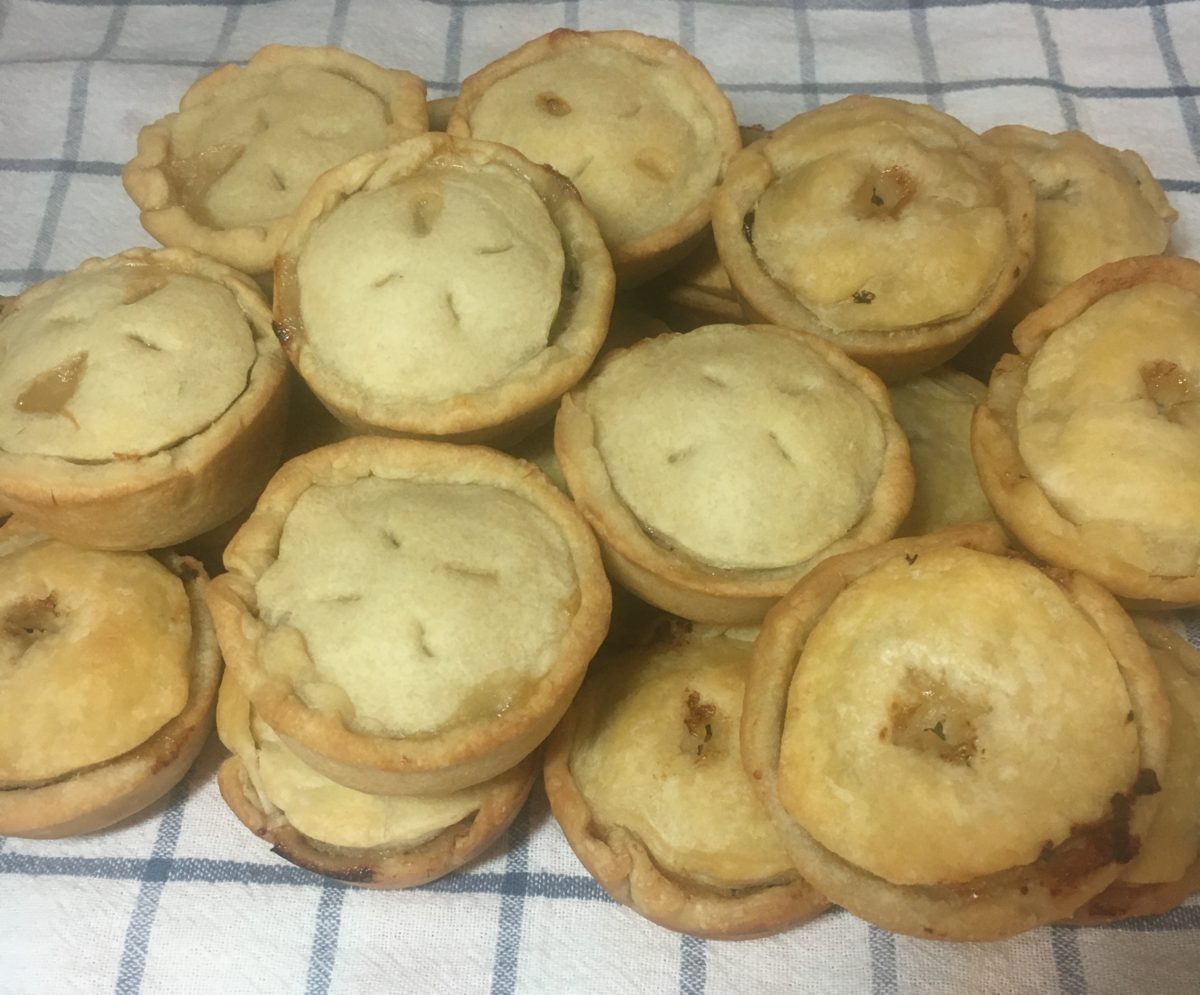Norse pies, pastys, tourtlets in fryture, Bridies… any and all are perfect for serving a lot of people with very little fuss, low cost and few ingredients. The secret is all in the crust. The best (and most period) ones are made with a hot water crust (often called ‘standing crust’), which creates a sturdier, less tender and flakey, crust that holds up while being handled. The earliest hot water crusts were meant to be nothing more than to serve as a container to bake, fry, hold or transport the delicious filling inside.
My recipe for Hot Water Crust is based on a later period one that makes an edible crust, but still is easily transported. Instead of cutting the fat into the flour quickly and adding cold water, which makes a tender, flakey crust, a hot water crust is made by boiling the water and the fat to)gether and combining the mixture with flour and salt (if using). The resulting dough is reminiscent of Playdough, and very easy to work with.
The filling for the Chicken and Leek Pies was based on a recipe I have used for several feasts, from Le Viandier de Taillevent:
193. Norse Pies (in the syle of the North).
Take cooked meat chopped very small, pine nut past, currants, harvest cheese crumbled very small, a bit of sugar and a little salt.
I used cooked chicken thigh meat for these pies, and goat cheese. For the pine nut paste, I simply ground pine nuts, a small amount of olive oil, and salt, into a butter. I then added currents, and seasoned the mixture with salt and a little bit of sugar.
The Salmon and Leek Pies were similarly made. The leeks were softened in a small amount of olive oil, combined with the salmon and some fresh herbs (I used parsley) and the combined mixture was seasoned with salt & pepper, dried sage, ginger, and a sprinkle of cinnamon.
<><><><><>
With thousands of miles of coastline Scotland has fish and shellfish in abundance. The fishing economy began in earnest when the Vikings arrived in the 8th century in search of herring and land to cultivate. Fish was a regular dish as the church forbade the eating of meat during Lent and on Wednesdays, Fridays and Saturdays. Herring, pike, salmon and bream were commonly eaten as well as eels, which were caught in lochs with wicker eel traps and barbed eel spears. Food from the sea, river and pond was plentiful and cheap and by the Middle Ages was an integral part of most Scots’ diet. Entire coastal communities were set up devoted to catching, processing and packing fish for local consumption and export.

